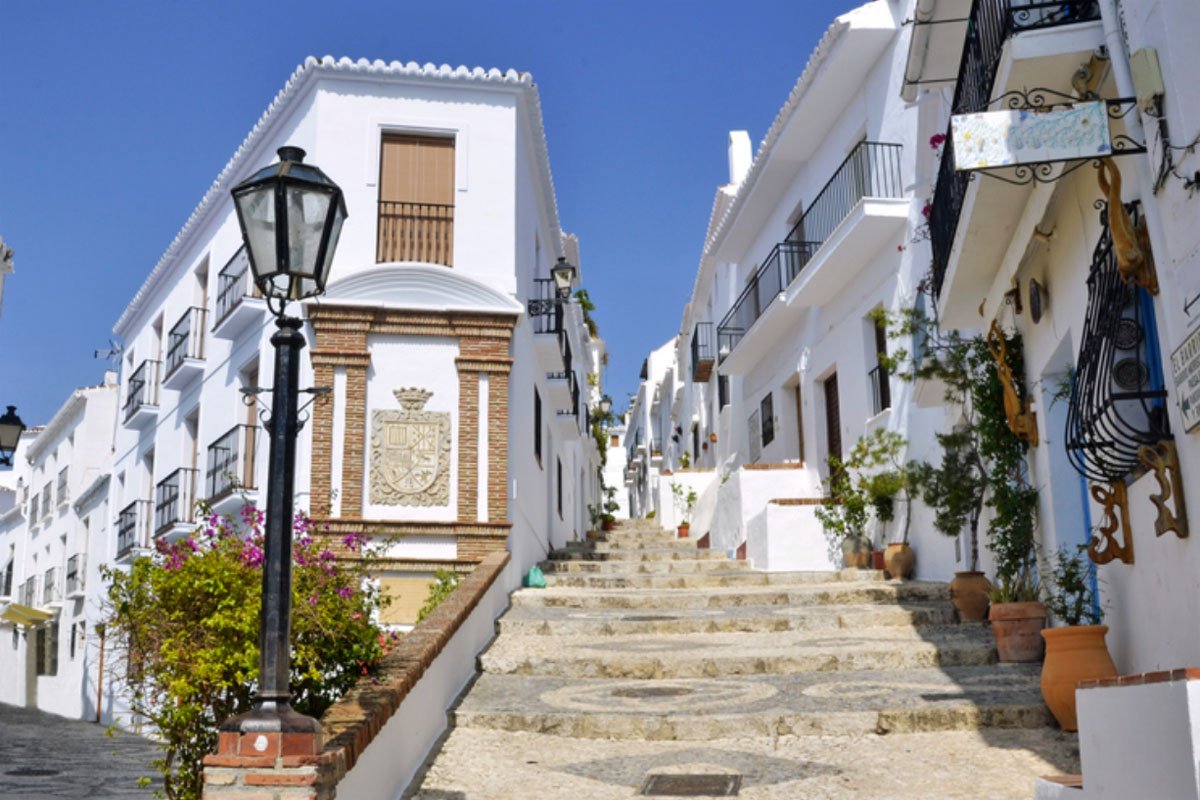Today I would like to recommend to you a trip to Axarquía, which is one of the nine municipalities of the province of Málaga. Geographically, the region is located in the easternmost part of the province of Málaga.
Axarquía stretches along the coast and inland. Its coastal towns form the eastern coast of the Costa del Sol.
The historic capital and most important city is Vélez-Málaga. “Jarquía” (xarquía in old Castilian) means “district or territory east of and dependent on a large city” and comes from the Arabic šarqíyya, meaning “eastern region”. It coincides with the Axarquía region, which is located in the eastern part of the province of Málaga.

Here you will find one of the most beautiful white villages – the pueblos blancos – Frigiliana. This town has around 3,000 inhabitants. It impresses with its location on the mountainside and its unique architecture from Moorish times. Frigiliana is the best-preserved white village of the entire province of Malaga.
When arriving in the town, you can park on the main road. If there is no space, you will find an underground car park on the left at the Tes Culturas square.
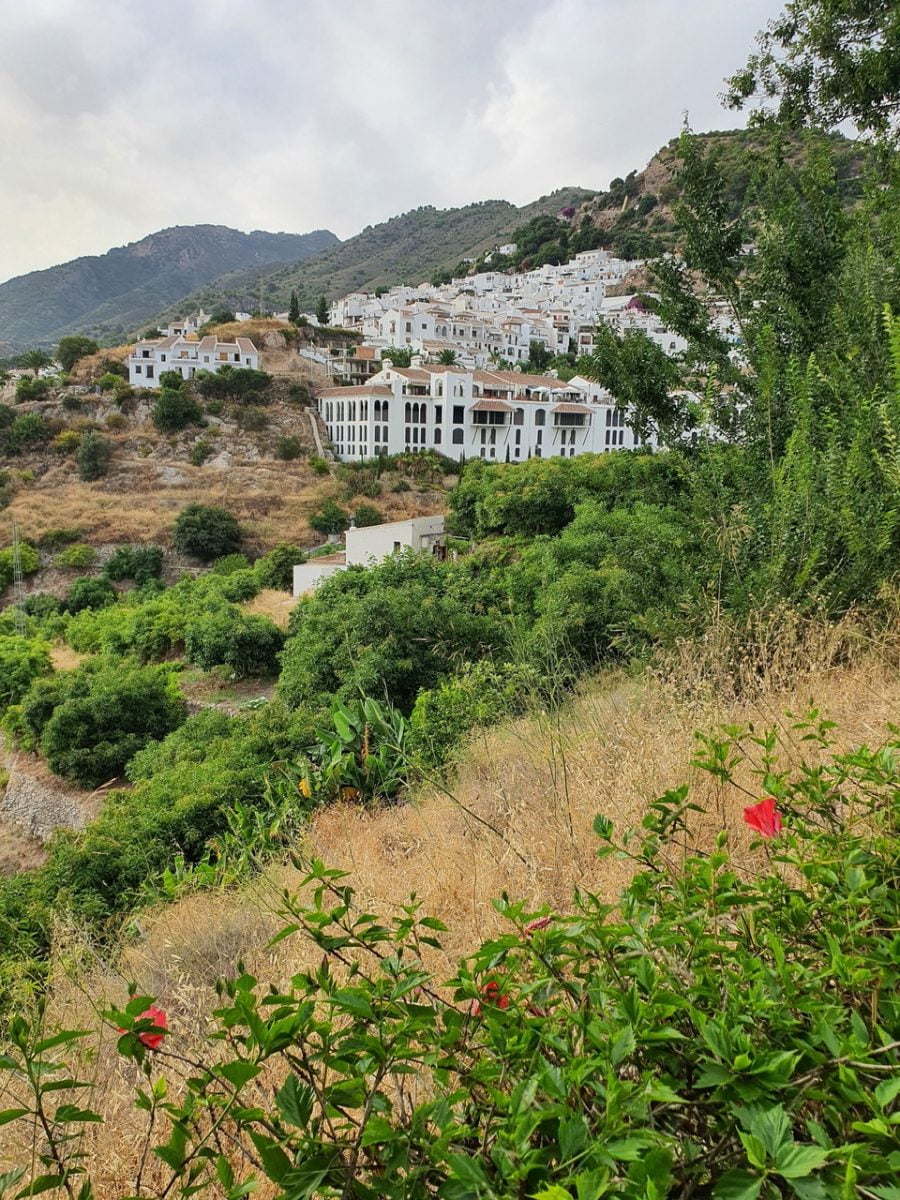
We will begin our tour with the Plaza de Tres Culturas (Three Cultures Square ). The name refers to the peaceful coexistence of the followers of three religions: Christians, Muslims and Jews. The south of the Iberian Peninsula had been under Moorish influence since as early as 711. Their rule ended in 1492, after the fall of the Muslim Kingdom of Granada. During the early centuries, the coexistence of the three cultures proceeded peacefully and this resulted in the emergence of a unique art, architecture and culture, which in Europe can only be found in the south of Spain.
On the hill in front of you, you will see a large building that stands out for its size. This is the sugar cane mill, which is located in the palace of the Counts of Frigiliana, built by the Manrique de Lara family at the end of the 16th century. Since 1720, it has been extended and adapted to the production of cane syrup (molasses).
The decoration of the main façade is very interesting with paintings and sgraffito with geometric motifs that run the length of the façade(Sgraffito is a technique of wall decoration; it consisted of applying successive coloured layers of plaster or coloured clay and scraping off parts of the surface layers while they had not yet hardened. By exposing the layers previously applied, a two- or multi-coloured pattern is created; particularly popular during the Renaissance). This wall decoration is organised in bands in which rhombuses, rectangles in earth colours and blues are prominent. The decoration of the façade of the nobleman’s mansion is one of the most important features of this place, which is a symbol of Frigiliana. Noteworthy are the two niches that housed the statues of the Virgen del Carmen and San Raimundo and the sundial.
Today, this vast estate is dedicated to the production of the only cane syrup produced in Europe. Until the mid-20th century, sugar cane fields were found along the entire Costa del sol and there were more than 30 sugar factories. Today there are only a few cane fields in the Axarquía region and the only factory in Frigiliana.
On the corner, walking towards the centre of the town, you will see a small shop-bar called El Lagar, where local food products are sold. You can buy local sweet wine poured straight from the barrel here.
es-es.facebook.com/pages/category/Wine-Beer-Spirits-Store/El-LAGAR-de-Frigiliana-331559496971503/
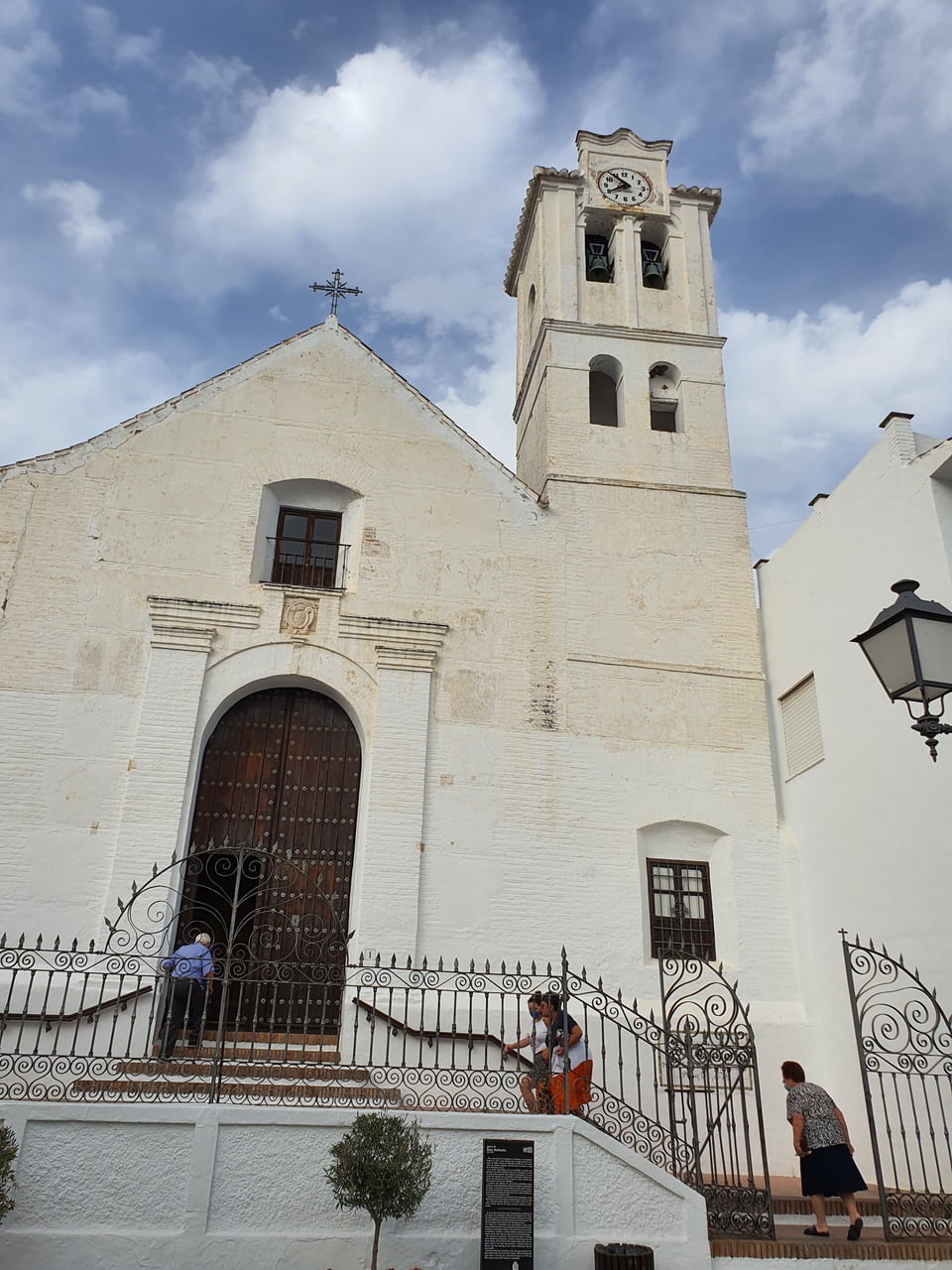
From here, we head through Calle Real towards the church, which stands on the site of a former mosque.
The Church of San Antonio is another symbol of the conquest of the town, formerly Al-Andalus, by the Christians, which also has a historical artistic value as it allows us to recognise the features of the expressive form of Spanish society of the 16th and 17th centuries. The composition of its façade is a common feature that refers to the churches of Colmenar, Cómpeta, Salares, Torrox and Vélez Málaga. In this way, the façade of the Church of San Antonio is a hallmark of Frigiliana as an integral part of the cultural landscape of the Axarquía region.
The façade of the Church of San Antonio is constructed of a monumental rectangular block with a gabled roof to which the body of the bell tower is attached. The monumental scale of the façade is emphasised by some key architectural elements: the Doric-style pilasters on which the beam is placed, which surrounds the coat of arms of the Bishop of Malaga, Fray Alonso de Santo Tomás. A medium-sized sketch window opens above the beam.
The façade is surmounted by a two-part belfry, ending in a turret converted into a place for the temple clock. The belfry – its façade and configuration – points to the tradition of Christian architects of the 16th century of adapting former minarets into belfries.
The interior decoration of the church has a strong Andalusian Baroque influence. Undoubtedly the most interesting thing is the altar cabinet on the left side, which preserves masks depicting the biblical figures accompanying Jesus at the Last Supper. These masks were used during the Easter Thursday processions.
Among the arches separating the nave from the side aisles, the first two we found when entering the church have an interesting painted decoration, discovered in 1998. The decoration of the first of these arches is based on a typically Baroque eschatological motif: a total of 10 skulls with crossed tibias, some of which are covered with crowns and papal tiaras, reminding us that death comes to everyone, regardless of social status. It seems likely that much of the church was originally painted.
Behind the Church Square on the left you will find the restaurant La Bodeguilla. I recommend this local, reasonably priced family restaurant, with delicacies from Frigiliana. The speciality here is meat dishes. The terrace has a beautiful view of the town and the mountains. A cool local flavour.
www.labodeguillafrigiliana.com/bodeguilla_abajo_main.htm
The whole structure of the town is a kind of maze of narrow, winding streets. It is a typical Moorish structure. On the one hand, this is an important defensive function: the enemy when attacked did not know how to move, and on the other hand, the narrow streets provide more shade during the hot summer. On top of that, all the houses are whitewashed with lime – also a legacy from the time of Al-Andalus. The white colour does not absorb as much solar energy during the hot summer, it provides protection against moisture during the winter, as well as lime being a natural way to keep out insects. In many white villages there is a law mandating that houses be painted this colour. This makes Andalusian pueblos blancos visible from a distance as uniform white areas.
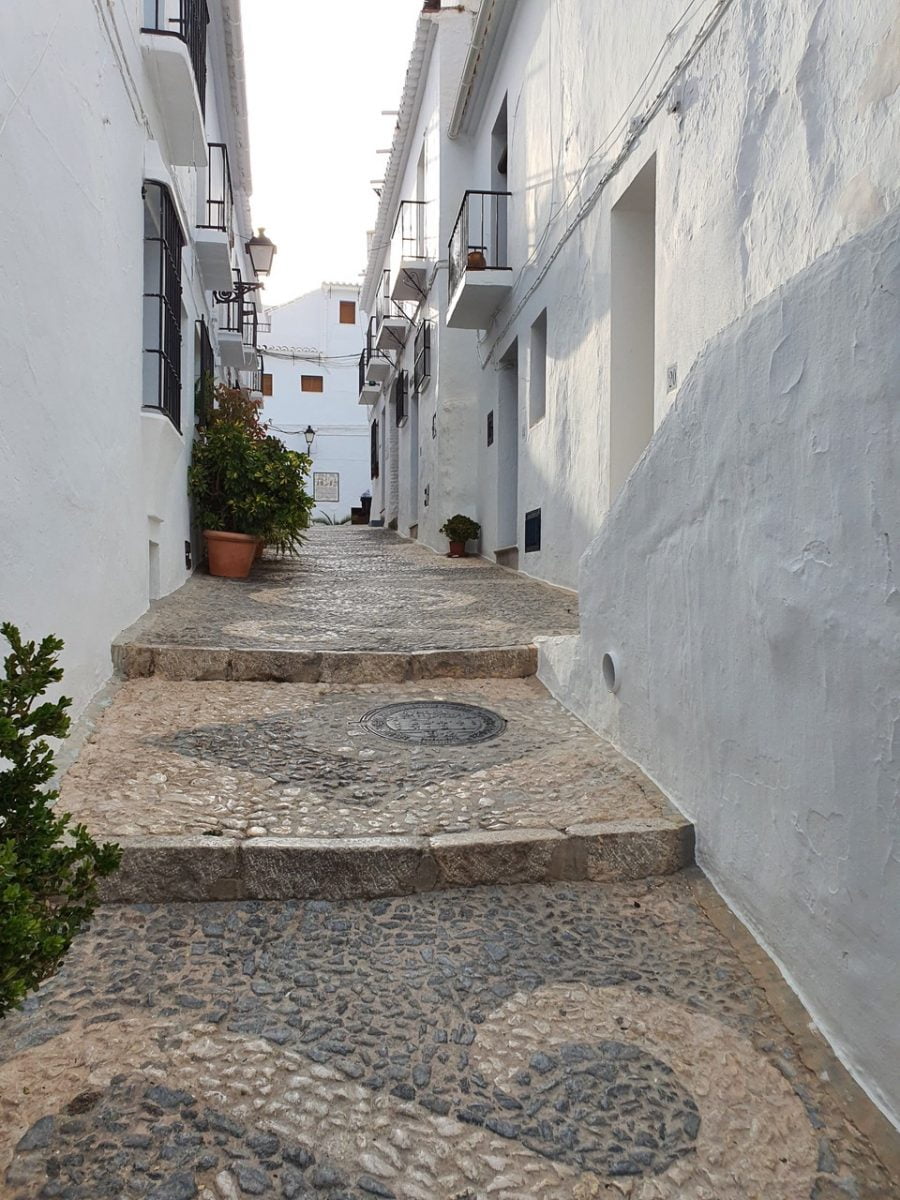
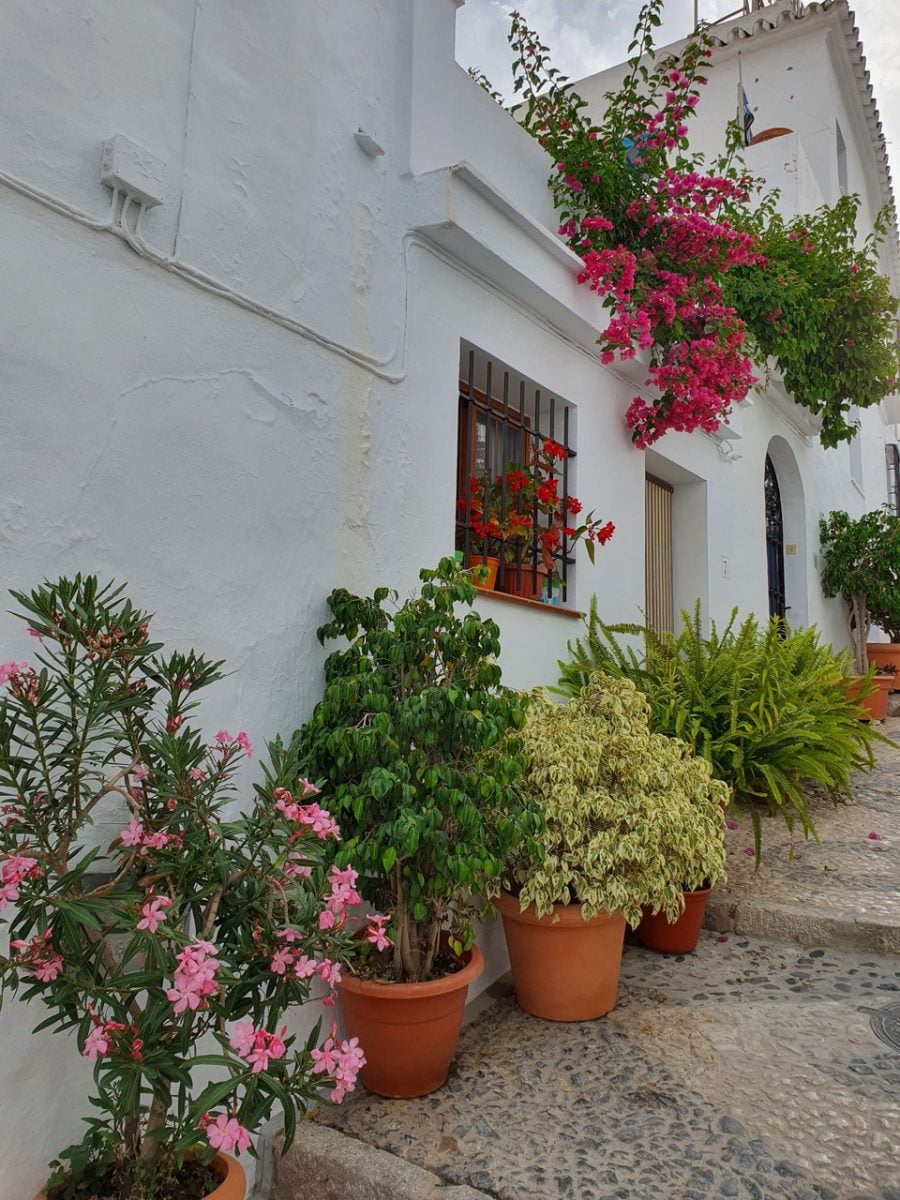
It is worth getting lost in this labyrinth and breathing in the atmosphere of ancient times and cultures.
As you leave the church, go around to the right. You will see an inscription on the wall: Bario Morisco. After the reconquest, at the beginning of the 16th century, all Muslims living in the new areas of Castile were forcibly baptised. They were called moriscos – moriscos. This is where the former district inhabited by the Moriscos begins. Continue through a tunnel under one of the houses. We will see a small, charming square.
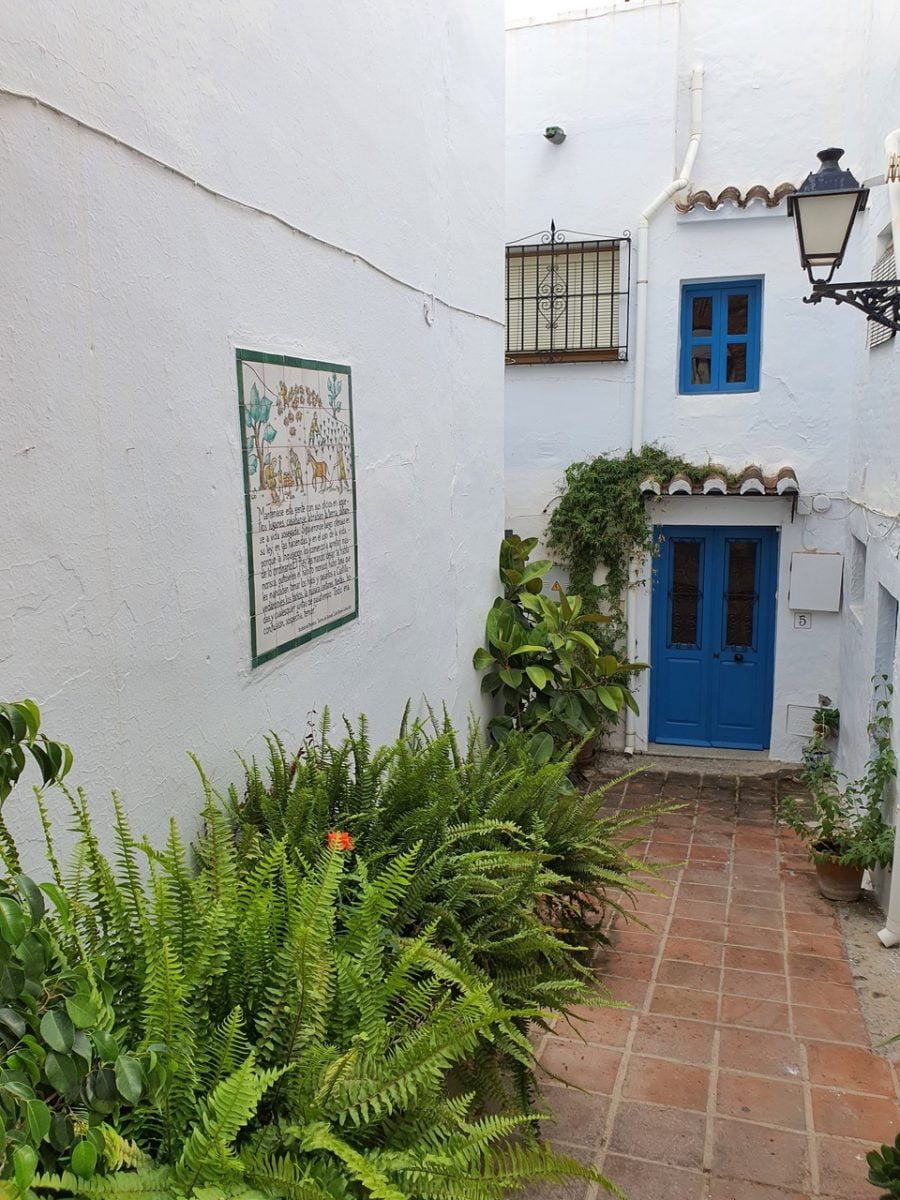
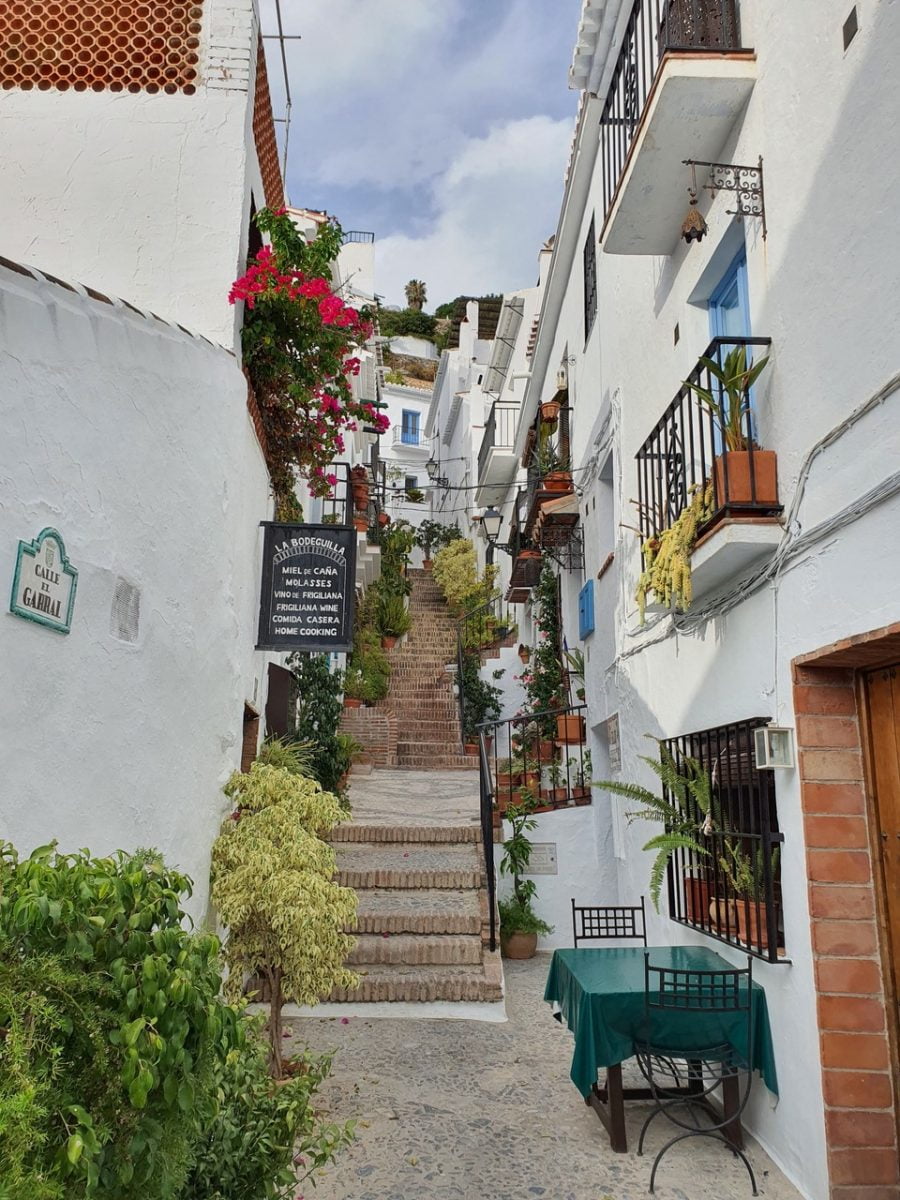
In the square, let’s go straight, a few steps down, where we will see the sign: Callejon del Inquisidor – In quisitor’s alley… and in a moment we will see a charming little fountain commemorating the Three Cultures. When we go down a few steps lower, we will see another beautiful backstreet of Frigiliana.
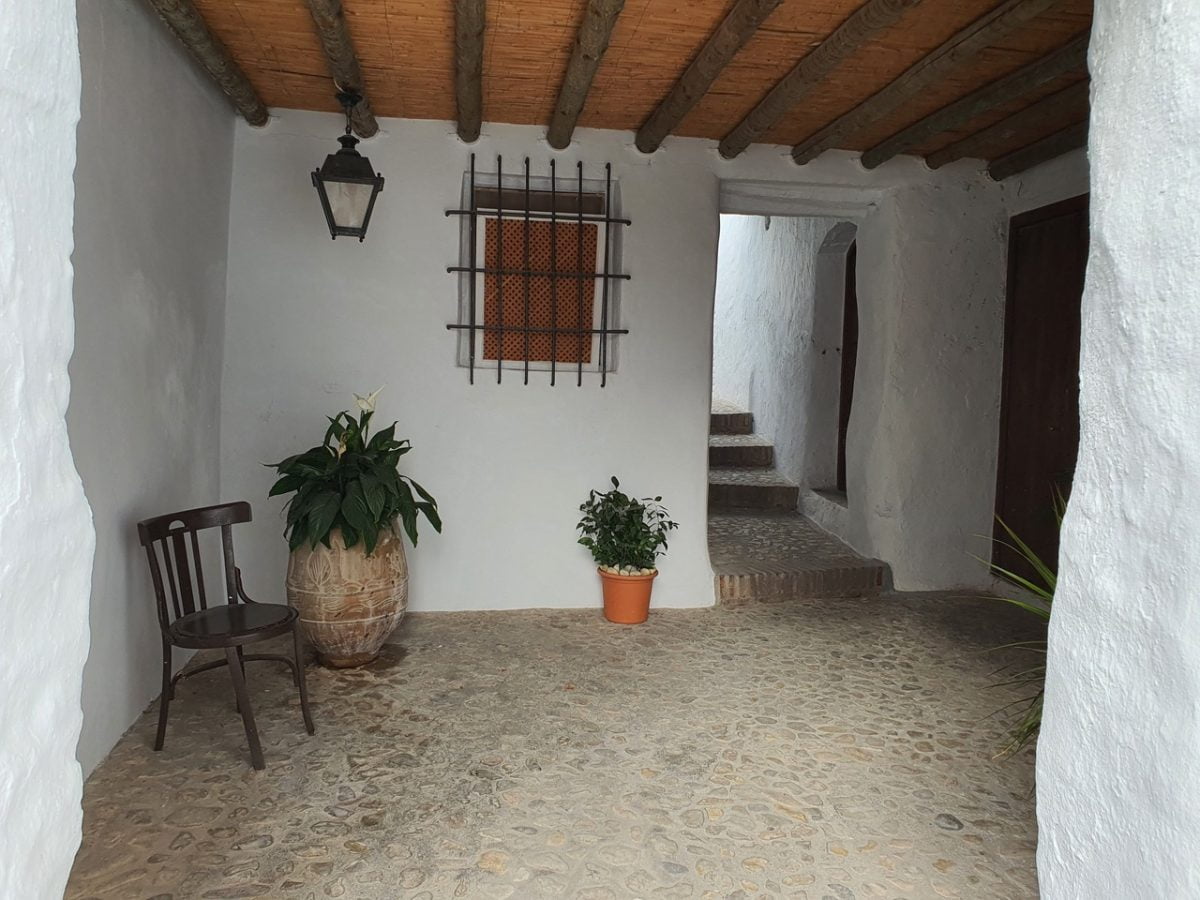
Symbols of the three cultures are visible in many places in Frigiliana. This chair is just asking to sit down and enjoy the unique surroundings.
I then suggest going back to the last square and going up the stairs to the upper part of the town. At the top, turn right. In a moment you will pass another charming street going down. On the left there is a café-bar called La Tahona. It has a very nice terrace with views. A great place for a coffee or wine and for a little rest.
es-es.facebook.com/LaTahonaDelZacatin
If you fancy a dinner with beautiful panoramic views of the countryside and the sea, I recommend you the restaurant el Jardin. Here you will find great Mediterranean food and charming views.
thegardenfrigiliana.com/the-restaurant
On the way back towards the car, it is worth passing through the small botanical garden of Santa Fiora, opened in 2010. It is an unusual garden as it represents specimens of plants that have been useful in the daily life of the inhabitants of Frigiliana over the last centuries, such as holly, sugar cane, palm cores, olive and orange trees and native medicinal plants such as thyme, rosemary, oregano.
For those with a thirst for good Polish cuisine, I recommend the only Polish restaurant in the area: Sal y Pimienta. It is located in a small shopping centre on the Three Cultures Square. It is worth booking in advance (closed on Wednesdays).
Restaurant Sal y Pimienta, Plaza de las Tres Culturas 1, Frigiliana
Telephone: +34 666 61 82 06
It is worth visiting Frigiliane during the annual festival of three cultures at the end of August (cancelled in 2020).
www.festivalfrigiliana3culturas.com
A visit to Frigiliana can be combined with a visit to the charming coastal town of Nerja with its breathtaking viewpoint – the balcony of Europe. I also recommend the amazing Nerja cave. In high season, you can enjoy the beautiful surrounding beaches such as La Burriana or el Maro.

